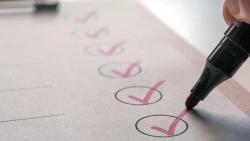
OR WAIT null SECS
- About Us
- Advertise
- Contact Us
- Editorial Info
- Editorial Contacts
- Editorial Advisory Board
- Do Not Sell My Personal Information
- Privacy Policy
- Terms and Conditions
© 2024 MJH Life Sciences™ and Pharmaceutical Technology. All rights reserved.
Europe Prepares To Battle The Counterfeiters
Pharmaceutical Technology Europe
In an age dominated by the internet and uncertainty over the best packaging security methods to employ, counterfeit medicines have the ideal environment to thrive.
How has the problem of counterfeit pharmaceuticals in Europe altered in the past year? Is the situation improving or getting worse?
Alison Williams. Senior Vice President at Aegate.It very much depends upon which statistics you looks at. According to the Pharmaceutical Security Institute (PSI), in 2010, there were 327 incidents of counterfeits in Europe, compared with 354 in 2009. However, if you look at which therapeutic class of drugs are being targeted, this is changing significantly with the PSI reporting a 182% increase in metabolic drugs compared with a 43% decline in hormonal treatments in the past year.
Turning to the internet specifically, two weeks ago a co-ordinated effort by Interpol involving 81 countries confiscated 2.4 million illegal and counterfeit pills with an estimated value of $6.3 million. 13,500 web sites were shut down and 55 individuals are currently under investigation or under arrest.
These co-ordinated events always result in seizures and arrests and raise a degree of public awareness; however, these represent just a fraction of the actual scale of the problem. What is clear is that we cannot be complacent. Looking at the PSI statistics, every different type of therapeutic class is at risk and purchasing medicines on line is clearly unsafe.
Many counterfeit medicines come from the internet. Why do so many consumers ignore the dangers of buying drugs online?
In the digital age we live in with Facebook, Twitter and on-line shopping, many consumers are not distinguishing between purchasing DVDs, CDs or books from medicines. They trust the internet and are not aware of the dangers of buying medicines on line. The other problem is a general lack of visibility and appreciation of the role that high street pharmacists play in dispensing safe medicines; for example, appreciating the importance of checking for drug interactions or contraindications.
In addition, it is well known that some consumers purchase medicines on line to avoid embarrassing encounters with their general practitioner, such as for impotence drugs. The problem with this, however, is that need for this medicine may be hiding an underlying serious physical issue that will remain undiagnosed.
Another reason consumers often cite—particularly in France, Germany and Spain—is that there is no nearby pharmacy, which makes purchasing on-line the most convenient option. Others describe better availability of medicines and being able to shop around on price as being important.
However safeguards must be in place; just last month two 13 year old girls were admitted to hospital in the UK complaining of heart palpitations. They had been taking weight loss pills that they had bought on line. Similarly, in May a 27 year old paramedic died after taking sleeping tablets.
How are pharma companies, organisations and stakeholders currently addressing the issues of counterfeiting? What type of packaging security measures and authentication systems are being adopted?
The vast majority of pharmaceutical companies do address their brand security; the types of measures used include covert and overt solutions. Of course, the covert markers, such as colour-change inks or ultra-violet markers, are aspects that are not communicated and instead used for forensic testing purposes. Products that are deemed at risk may have several different type of security device applied.
Legislative requirements for unique barcoding of medicines are emerging across the globe at present with Brazil, Argentina, India, Turkey, France all moving towards a 2D datamatrix code. This is a small square shaped barcode which can cleverly carry data such as a unique number inside the code. When read by a reader the information can be verified as being correct and also authenticated to confirm this is indeed unique and the item has not be sold before.
This coding and authentication step is part of new legislation for Europe. The falsified medicines directive was passed in July this year and will come into force in member states by January 2013. Throughout 2012, there will be a consultation process by the European Commission to determine which technical method of unique coding is required to create a harmonised approach across Europe. When creating defensive barriers against counterfeits in Europe it will be important to ensure there are no weaknesses that exist. Hence, the exact implementation steps will be determined by the EC.
Authentication systems are currently in voluntarily operation in Belgium, Greece and Italy, but some other member states are planning pilots for 2012.
Do you think the industry and its stakeholders are doing enough?
Data from the EC suggest that counterfeit medicines in the legal supply chain in Europe are growing at a rate of 10–20% per annum. Given that the problem continues to grow despite the fact that security devices are already being implemented, this suggests that there is always more that can be done.
In the current economic environment, however, companies may well want to do more, but are restricted and can only act if there is a real threat to the brand and patient safety, or if there is a good case for return on investment. Estimates now suggest that the counterfeiting business is worth €128 billion globally (1), so the business case exists for global companies to take action. Smaller companies who perceive they are less affected will perhaps only take action when required to do so by law.
It is interesting to see the latest steps taken in India where there will be a legal requirement to uniquely code every exported medicine leaving India by 1 July 2012. If smaller Indian companies can achieve this within a short timeframe, there can be no question that Europe’s pharmaceutical industry can step up if it chooses.
To be fair, many companies are waiting to hear the outcome of the EC’s consultation as to which code they should apply before investing in printing technology. With this in mind, one could question whether the EC is moving quickly enough to prepare this second piece of legislation. We have been informed that the consultation for this will not take place until 2012 and will not be published until at least 2013, followed by a three year implementation procedure. How many patients may be harmed, injured or worse from a fake medicine over the next five years when actually all stakeholders are already aligned as to which safety feature they would like to see harmonised across the EU?
For Europe, how do you think the recent legislation on falsified medicines will help the situation?
On 2 January 2013, the legislation will require changes to good distribution practices, and will increase liabilities and penalties for those who trade within the supply chain. They will assume equivalent responsibility for the authenticity of the pack as the original manufacturer.
By July 2013, member states must implement a system that will, in the event of a recall, permit communication to patients within 24 hours and retrieval from patients. The recent UK recall for Nurofen Plus was a case in question; it was unclear as to how many items were still available for sale, and therefore there was heavy reliance on the media as a channel to communicate to the public to retrieve affected packs. For some member states, this legislation will be hard to implement due to privacy laws that prohibit the pharmacist from obtaining or keeping any contact details for the patients they serve.
Once unique coding and authentication is in place, however, a check and balance of the exact amount to be recalled and the ability to disseminate information to every pharmacist at the click of a button will be possible. In countries where authentication systems are operating, patients are being protected. In Greece, for example, there have been 50 recalls in the past six months—three of which could have had serious health consequences. The authentication system alerted pharmacists to 18000 recalled items immediately before dispensing, creating an immediate block on any substandard pack reaching a patient.
Unfortunately, it will be another 3–4 years before the fully protective measures required under the legislation come into force.
What further steps still need to be taken against counterfeiting and securing the supply and wholesale distributions chains?
Primarily, the EC needs to consult and then bring into force clear implementation legislation as soon as possible. This needs to address weaknesses in the supply chain such as the security of legal imports from outside of the EU and the security of generics: are these at risk or not? Whilst the generics industry clearly states there have been no counterfeit generics in Europe, if these remain unprotected whilst other prescription medicines are uniquely coded, what will counterfeiters target next?
There must also be harmonisation of approach to ensure no weaknesses appear in systems operated by one member state compared with another, as this also leads to gaps that can be exploited by counterfeiters. Finally, the EC must determine when and where in the wholesale and distribution chain should products be authenticated? Whilst it is clear that pharmacists should (and can) check every pack they dispense, this is unlikely to be viable in the supply chain.
In conclusion, increased patient protection is going to only be achieved once the EC brings into force the next step in the legislation. We urge the consultation process to be carried out as efficiently as possible as member states will have three further years before they have to legally implement systems that will ultimately protect consumers.
References
1. BBC News, “Counterfeit drugs targeted by technology in India” (October 2011). www.bbc.co.uk
Alison Williams is Senior Vice President at Aegate. http://aegate.com/



